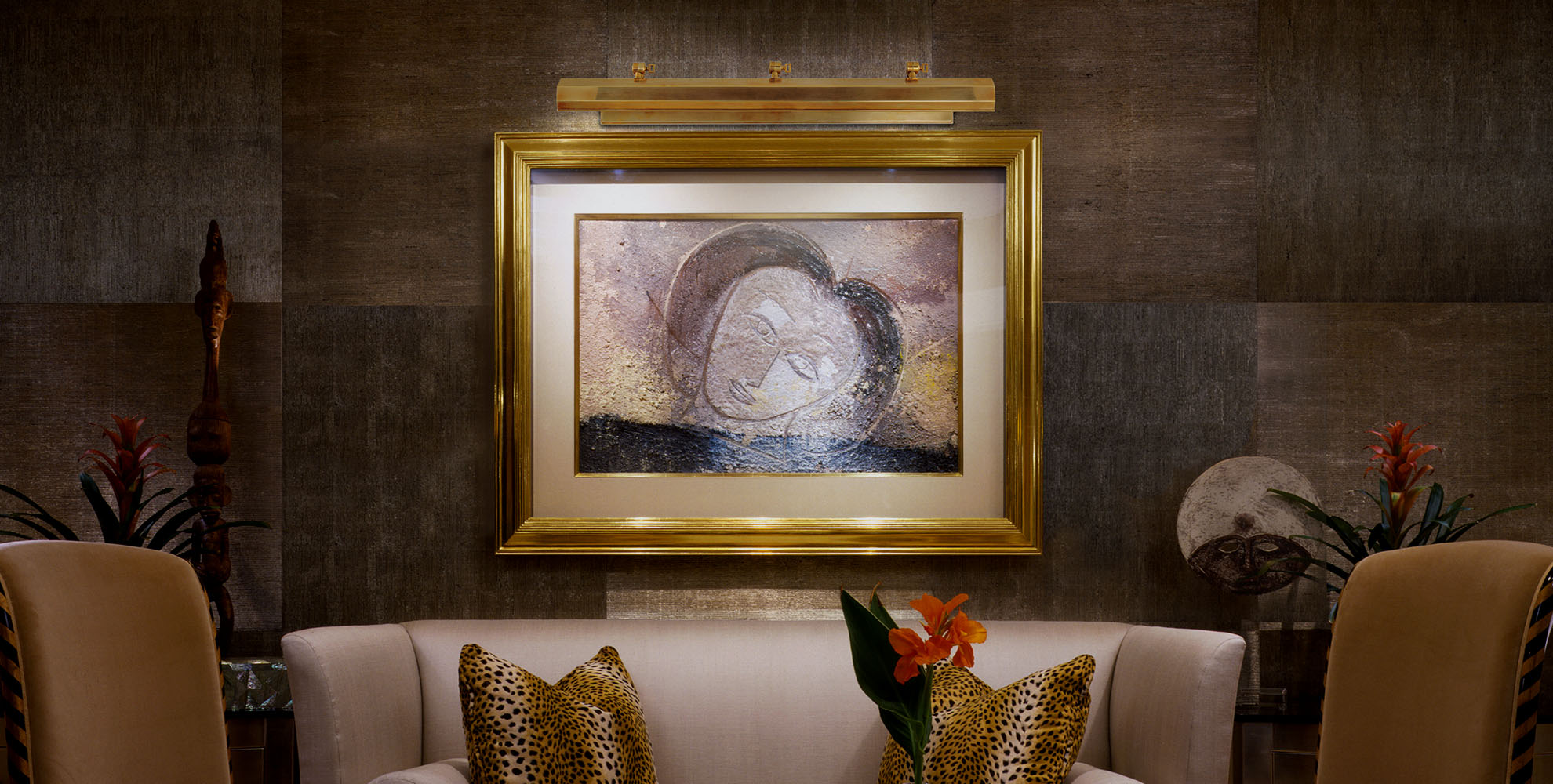How to Light Artwork
Enjoying your artwork at any time of day or night is easy with the right lighting. We'll
show you how to make sure your favorite pieces get a museum-worthy display.
You've taken the time and emotion to invest in art that you love and getting it hung in just the right spot (see: How to Choose and Hang Wall Art). But there's another question for you to consider: How will you see that art when the sun goes down?
The approach you take can be as simple or as seriously considered as you like. Here are the nuts and bolts of how you can approach artwork lighting the right way.
Au Naturel
You might prefer to have only natural light shining on your pieces, but try to make it indirect light. UV rays can age and fade your artwork, so it's best to filter the light through curtains or blinds, or use clever positioning to put furniture between the art and the sun's rays. Or, simply hang your piece on a wall that isn't fully exposed sunlight all day: North-facing walls generally have consistent, soft lighting for most of the day, east-facing walls get a lot of morning light, south-facing walls will have afternoon exposure (the brightest and hottest light) and west-facing walls will be lit up in the evenings.
Ambient Light
Position the artwork next to, beside or above a console or side table where an existing light can provide added depth and ambiance to the piece. Move a floor lamp or table lamp to where it can illuminate not only the art, but also the space around it. This is an easy solution where you can choose to make the artwork or the light be the center of attention—or perhaps both together.
Recessed Lighting
If you live in a space where recessed lighting is already installed, you're in a uniquely advantageous position. If the sockets are adjustable/tiltable or are placed closer to the wall, you can hang artwork, and then strategically direct the light right on it as if it were a custom installation. You can even install bulbs of different color temperatures or use different types of filters to enhance colors in the art. Or, try a floor-install for your recessed lights to focus the light upwards toward your artwork. It's an unusual look that reads quite modern, like a gallery display.
Picture Lights
Picture lighting is specifically designed to highlight artwork, installed directly on the frame or the wall above. This type of lighting has been used for many years by museums and art galleries, but in recent times it is used more in the home, especially in libraries, living rooms and more formal spaces. Consider whether you will need to plug in the light source or have a hardwired connection already in place. This more sophisticated type of lighting not only safely lights the artwork, but it can also set a certain tone or mood in the space.
PRO TIP
Install picture lights with the light source facing toward the floor, not the artwork, to reduce glare on the piece.
Ceiling Track Lights
Track and monorail lighting systems are one of the more involved types of lighting installations, but they’re also very versatile. Track lights and monorail heads can be moved along the track or rail and adjusted to focus where needed. In addition to focusing on artwork, this type of lighting can be used for general lighting when pointed down and for wall washing. We recommend working with a lighting designer, or at least purchase your lights from a professional lighting source that can give you helpful installation advice and guide you toward the perfect configuration for your space.
Floating Cable/Suspension Lights
If you have very high ceilings, this may be your best bet for artwork lighting in your space. Cable kits suspend from the ceiling or wall and bring the light you need down to an accessible and useful level, which is helpful for both generalized and very specific lighting needs. The lights in these kits are directionally versatile and can slide and grip along the cable to be positioned where you need them most. As with track and monorail systems, this type of installation is best handled via a reputable lighting source and certified electrician. The results (and not having to get up on that ladder yourself) will be more than worth it.
Final Tips
Layer the light: A combination of natural, ambient and focused light provides beautiful viewing of your art and your home at every time of day.
Choose LED: LEDs are ideal for artwork lighting, since they last longer than other light sources and don't emit infrared rays, UV rays or heat. The heat produced by halogen and incandescent bulbs can damage art over time, as well as increase your electric bill.
Position things properly: Where you've chosen to hang your art determines just how much extra lighting you need to show it off, so be deliberate. The same goes for placement of any needed artwork lighting. Unless you're highlighting a vignette with portable lamps, the best artwork lighting is basically be invisible to allow the art to shine.











